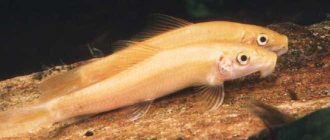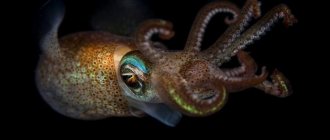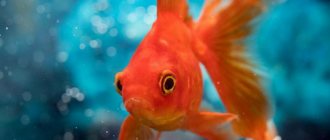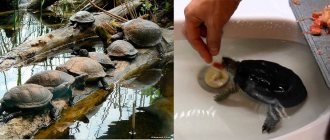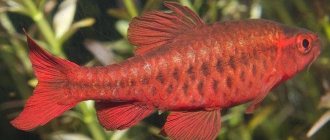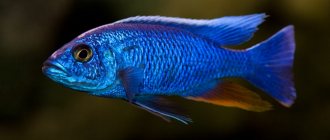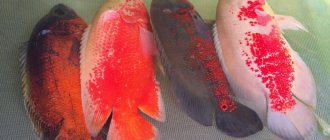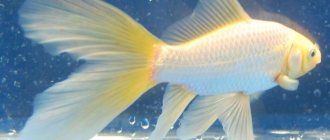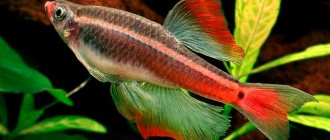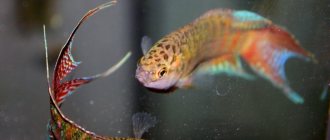Veiled ancistrus photo can be enlarged
Ancistrus is a common aquarium fish. The reason for its popularity is rather the originality of the pet than its decorative qualities. This fish is a suction cup and moves in leaps and bounds, fixing itself with its mouth transformed into a suction cup to glass, plants and stones. In addition, the mouth is equipped with horn-shaped scrapers that allow you to clean various fouling from various objects in the aquarium, glass, stones, plants.
Habitat and appearance
In nature, Ancistrus vulgaris is mainly distributed in the northern and central parts of South America. It can live both in stagnant lakes and in rivers with fairly fast currents. The body, covered with a shell of keratinized plates, resembles half a drop of water, cut lengthwise. But it’s better to look at the photo for the shape and color. Adult specimens in aquariums reach 10 centimeters. The maximum dimensions depend on temperature and decrease as it increases. Ancistrus are usually not kept separately; they are placed in common aquariums as a cleaner.
Various variants of this popular fish have been bred in captivity. In addition to the common ancistrus, a veil form has appeared, characterized by an increased size of the tail and fins. As usual, there are albinos, whose bright yellow specimens are called golden ancistrus. Star ancistrus is distinguished by more contrasting white dots on a dark background. All these varieties can be seen in the photo on the left.
Description
Dolichopterus var albino is a ray-finned fish belonging to the chain catfish family and the genus Ancistrus. They are also called albino gold or golden ancistrus. The Ancistrus genus includes 69 species, but albinos have gained high popularity due to their unusual color for catfish. The closest relative is ancistrus hoplogenys or star-shaped ancistrus.
They live in South and Central America in the Amazon River.
Suitable for beginner aquarists because the fish are unpretentious and tolerant of many mistakes in care.
Appearance
Albino catfish have a flattened body with a large head. Large lips, similar to suction cups, and whiskers stand out on the head, with the help of which the fish finds food at the bottom. At the ends of the lips there are hard growths that help the catfish eat hard algae from stones. Males have hard skin spines on their body and head. By this “crown”, females identify males who are stronger and more capable of procreation. Females have no needles at all or they are of reduced size.
In its natural environment, the golden catfish is considered a fairly large fish, reaching a size of 15–17 cm. When bred in aquariums, their size has decreased significantly - now it is difficult to find fish longer than 6 cm.
The color of the fish ranges from pale yellow and pink to rich lemon. Although the catfish looks harmless and vulnerable in appearance, it is protected by hard scales. The fins and tail are transparent with body-colored cartilage.
Behavior
Catfish have a calm character and a neutral attitude towards other inhabitants. But among a large flock of Ancistrus, fights occur among males. They are territorial and protect occupied territories. When keeping one male ancistrus and a flock of several females, there is no conflict.
The golden catfish Ancistrus is active at dusk, and during the day it hides in shady places.
Lifespan
Life expectancy in an aquarium is up to 5 years for males, up to 4 years for females.
Maintenance and care
Golden photo can be enlarged
Ancistrus catfish is quite simple to keep. The fish is peaceful and gets along well in almost any freshwater tropical aquarium with a temperature of 22-26 C. It can withstand temperature changes from 18 to 33 C. In aquariums it has adapted to almost any composition of water, although in nature it lives mainly in slightly acidic water. Loves clean, oxygenated water. Therefore, intensive aeration of water is desirable, in the flows of which ancistrus prefer to stay.
The aquarium should be fairly densely planted with plants and contain various shelters in which these fish like to be. It is desirable to have driftwood, which these catfish happily scrape.
Albino photo can be enlarged
The male Ancistrus is exterritorial and actively defends the chosen shelter. The fish are crepuscular and are most active in the evening. They feed on various foulings from all surfaces of the aquarium. If there is a shortage of food, they may begin to scrape the plants and spoil them, especially young shoots. They partially feed on leftover food from other inhabitants of the artificial reservoir.
If there is a group of ancistrus or they are kept in a small aquarium, additional feeding of these animals with plant food is necessary. You can use scalded lettuce or cabbage. Industrial food for herbivorous fish in the form of tablets is also suitable.
Reviews
Aquarists speak positively about golden ancistrus, because they are unpretentious and peaceful neighbors for other inhabitants. They also allow you to less frequently clean the walls of aquariums from algae and reproduce easily. But sometimes cases occur when catfish spoil the thin leaves of a plant. Some aquarists are also upset that the catfish rarely comes out into the light, hides in shelters all the time and is active only at night.
Feeding
Ancistrus veil photo can be enlarged
The aquarium fish Ancistrus loves to eat and needs a lot of food. The main diet is plant-based; spirulina-based foods, which are available in tablets, are well suited. The tablets dissolve slowly in water and have an attractive odor for Ancistrus vulgaris. You can also add vegetables, which will significantly expand their diet. Hungry ancistrus eat pieces of zucchini, mugs of cucumbers and lettuce leaves to the ground. Broccoli and many other types of vegetables are also loved. But do not forget to remove uneaten food debris to avoid water rotting!
If you expect to get offspring from your Ancistrus, you should feed them frozen food. Their delicacies include bloodworms and correts, and they can ignore other types of live food. Since the fish feed from the bottom, make sure that there is easy access to the food, otherwise they simply will not notice it.
The simplest solution to ensure the normal functioning of ancistrus is to add driftwood to the aquarium. And the gastrointestinal tract needs legnin to digest food. And almost all species of catfish get it by scraping wood from snags. A sufficient amount of driftwood will allow them to remain active and healthy.
Useful tips
Thanks to their peaceful disposition and other positive qualities, even novice aquarists can keep and breed ancistrus. However, problems can still arise in an aquarium with catfish.
Experienced aquarists advise how to avoid and eliminate them:
- If spawning does not begin, take action - change most of the water in the aquarium, lower the temperature, increase the amount of protein food in the diet.
- If your neighbors in the aquarium take away the catfish's food - rapidly falling tablets, do not throw them at random, but place them straight in the catfish's favorite hiding places - grottoes, caves.
- Immediately remove any uneaten food so that it does not pollute the aquarium. Remember that ancistrus catfish, although they are considered orderlies, themselves need very clean, aerated water.
For even more recommendations on keeping catfish, watch the following video:
Compatibility
These catfish can be kept with virtually all types of aquarium fish; in fact, they are peaceful inhabitants of the aquarium bottom. However, it is impossible to say that Ancistrus is an absolutely harmless fish! Yes, everywhere - in RuNet articles they write that these catfish behave like “God’s dandelions”, but on aqua forums you can often find information that ancistrus chase fish, pester them and even spoil the skin. And it is true! Therefore, it is not advisable to keep them with slow and clumsy fish, for example, with the goldfish family. Also, you should not keep them with scaleless fish, for example, with sacbranch catfish; ancistrus can cause serious wounds to such fish with their “passionate kisses.”
Ancistrus are not compatible with large, aggressive and territorial cichlids, especially during the spawning period.
Reproduction
Black ancistrus photo can be enlarged
Breeding Ancistrus catfish is quite simple. Males differ from females by the presence of “horns” - leathery processes on the head. In females they are absent or weakly expressed. In addition, males are slimmer. Under good keeping conditions, these fish can lay eggs even in a community aquarium if they find suitable shelter. But the fry in this case are unlikely to survive.
When purposefully breeding ancistrus, both pair and group spawning is used. In the latter case, a group of 2 males and 4-6 females is used for breeding. A mandatory condition for reproduction is the presence of shelters in a spawning aquarium with a volume of 40 liters or more. It is best to use ceramic or bamboo tubes of suitable diameter. But you can also use stones and driftwood.
The spawning of ancistrus is provoked by replacing a third of the water with fresh water, increased aeration and a slight decrease in temperature. If the females are ready to spawn, and in this case they look very fat, then it can happen as early as the next night. In case of delay, you can feed the spawners directly in the spawning area with plant food, but it is imperative to clean the remaining food so that it does not rot.
Spawning usually occurs in the dark. The male chooses a suitable place for eggs and cleans it thoroughly. The female lays 40 - 200 eggs in this place in the form of a pink cluster. In the future, the female needs to be removed, and the male will protect the offspring, clean the eggs and create a flow of water for them. The eggs mature in 4-7 days, depending on the water temperature. During this period, the male ancistrus does not feed.
Sucker close-up photo can be enlarged
If the eggs were laid in a community aquarium, you can try to save them. To do this, the caviar is transferred to another vessel with the object on which it was deposited. If this is not possible, for example it is on glass, you need to carefully separate it. A sprayer is placed not far from the eggs, which provides a flow of oxygen-enriched water around the eggs.
When the yolk sac of the hatched larvae dissolves and they scatter throughout the aquarium, the male must be removed. From this moment on, the fry need to start feeding. You can use various industrial feeds for fry. Tablets for feeding catfish are especially convenient. Finely ground plant food and even live dust will do.
With regular feeding, at least three times a day, keeping the aquarium clean, and changing a fifth of the water daily, the fry grow very quickly. From the age of ten months they are already able to reproduce themselves.
Diseases of catfish
When buying fish, many people do not even suspect that their pets can get sick. Identifying the disease in catfish can be problematic, because the fish are nocturnal and rarely swim out for public viewing in daylight. Ancistrus may experience a number of health problems:
- White spots on the fish's body may appear due to stress. In this case, we are not talking about illness, but about stress staining. In a stressful situation, ancistrus become dull and partially lose pigmentation. This can happen when transplanting a catfish from a familiar container to another aquarium, as well as after transportation. The infectious disease in the form of white spots can be carried by other fish. Therefore, after acquiring new neighbors for the catfish, they must be kept in a quarantine tank for at least 2 weeks. If the color of the catfish has changed and spots have appeared, it is also isolated. Quarantine and treatment last for at least 14 days. For treatment, purchase the drug Antipar.
- Ichthyophthiriasis resembles a scattering of semolina on the body of a fish. The disease is caused by the ciliate ichthyophthirius. For treatment, potassium permanganate, copper sulfate, malachite greens and formaldehyde are used. These substances can lead to the death of algae and invertebrates inhabiting the aquarium.
- Velvet disease or oodiniosis may not manifest itself for a long time, but under unfavorable conditions (stress, changes in water parameters) it will begin to progress. Sick individuals are characterized by reduced activity. Their fins turn into fragments of sharp rays, on which there is no interray tissue. The fish's skin will begin to peel off, and the body will resemble velvet fabric. Without treatment with antibiotics, the disease cannot be controlled. For 100 liters of water you will need 1 bottle of Bicillin-5. On the second day, perform a partial water change (30%) and repeat the administration of the drug. After 48 hours, the treatment is repeated, a control administration of the drug is carried out a week later. The treatment is considered effective, but the algae die.
- With chilodonellosis, cloudy areas of a bluish tint appear on the sides and back of the fish. It is necessary to examine the caudal fin if it is tightly compressed but not disheveled - this is a sure sign of disease. Levomycetin is used for treatment. For 100 liters of water, 3 g of the drug is needed. The product is added 3 times, maintaining 48-hour intervals. Before adding the dissolved drug, the water in the aquarium is replaced by 1/3. Additionally, you can raise the temperature in the aquarium to +28-30°C and add 3 tbsp to the water. salt. But such an additive will contribute to the death of algae.
- Dropsy is hard to miss. The catfish's belly swells and it stops defecating. For treatment, it is necessary to remove the sick individual and add Levomycetin (75 ml/l) or Ciprofloxacin (50 ml/l) to the water. The water temperature must be at least +27°C. Treatment is carried out for several days in a row. Effectiveness is indicated by a shrinking belly and the appearance of bowel movements.
Editorial: Tetra penguin
Ancistrus starata is a good choice for a freshwater aquarium. The peaceful existence of the catfish with other fish will allow it to rationally fill all layers of the home pond.
Raising juveniles
Ancistrus red photo can be enlarged
The fry begin to be fed as the yolk sac is reabsorbed. Artemia nauplii and vegetable paste are mainly used as starter feed.
One of the feeding schemes: 50% of the diet - Artemia nauplii; 25% - scalded chopped green peas; 25% - scalded chopped cauliflower (or kohlrabi), added at a 1:1 ratio to an egg omelette with milk; Leave ready-made dry food for the larvae at night. After 8 days, the fry should be 12-14 mm long.
From this time, the juveniles are gradually transferred to the diet of the growing period: 40-50% - fresh Artemia nauplii or decapsulated eggs - up to 40 percent; 50% - plant foods (chopped scalded lettuce, spinach, dandelion, etc.); after a month, you can add up to 10% white bread or washed and scalded Hercules flakes to your diet.
Under favorable conditions, the larvae reach a size of 15-20 mm at the age of 3-4 weeks. By the age of ten weeks, the fish should be about 30 mm long.
Fry under six months of age need the constant presence of food. From six months of age until adulthood, fish should be fed at intervals of no more than three hours (tubifex, bloodworms, and enchytraeus are left on the feeding tables at night).
In addition to the correct feeding regime, the growth rate of fry depends on the stocking density, volume and temperature of the water. Thus, the following temperature regime is recommended: from the moment of switching to active nutrition until one month of age - 27-28 ° C; up to six months - 25-26 °C; after six months - 22-24 °C.
If you plan to keep it in a species aquarium, from the age of 2-3 months you can increase the salinity of the water to 1 ppm, maintaining the overall hardness at 8-10°. This makes it possible to transfer antsisters to joint keeping with many African cichlids.
Good live weight gain and a constant appetite are considered indicators of the health of juveniles. The abdomen should always be rounded, the coloring should be slightly darker than that of adult fish. Due to improper feeding of fish, the metabolism is disrupted, which may be indicated by: weight loss and loss of appetite, sudden loss of color, behavior unusual for the species (spinning, tumbling, swimming in a vertical plane, etc.). The use of bulky, swelling foods of plant origin can cause intestinal bloating in fish, sometimes resulting in their death. If signs of illness appear, it is recommended to replace half the volume of water in the aquarium with fresh water at a lower (2-3°) temperature, increase aeration and water flow.
This is interesting
- Ancistrus catfish is popularly called sucker catfish.
- The maximum body length of the ancistrus catfish depends on the water temperature: the higher the temperature, the smaller the catfish.
- Ancistrus do not have a swim bladder, unlike other fish. Therefore, in order to swim some distance without holding on to objects with their suction cup mouth, fish have to work very actively with their fins.
- If there is no male in the aquarium, the female can change sex. However, this happens in many other fish species.
Diseases
Ancistrus catfish are not in poor health, but some diseases also affect them. A common cause of disease is failure to maintain cleanliness and hygiene of the aquarium, untimely change of water, and rotting of food particles stuck between stones. Therefore, the best prevention of diseases in the aquarium inhabitants is timely cleaning and replacement of water.
In order to promptly determine the deteriorating health of ancistrus, you need to monitor the condition of your pets every day. If you recognize the disease in advance, it can be easily cured.
Symptoms of a sick catfish:
- Unusual behavior, uncharacteristic actions. Sluggish and inhibited or overly active behavior in combination with other symptoms indicates some kind of disturbance in the body.
- Change in fish color. More often the yellow color fades and loses its brightness. But this also happens after the spawning process, so this symptom is inaccurate.
- Poor appetite or its complete absence. Healthy fish are always ready to feed and swim to the place of food. And the patient remains in the shelter and does not touch the food.
- The formation of unhealthy plaque on the skin and scales.
Fish with one or more symptoms are separated from the others. Most often, catfish are affected by fin rot, swim bladder disorder and bacterial diseases.

